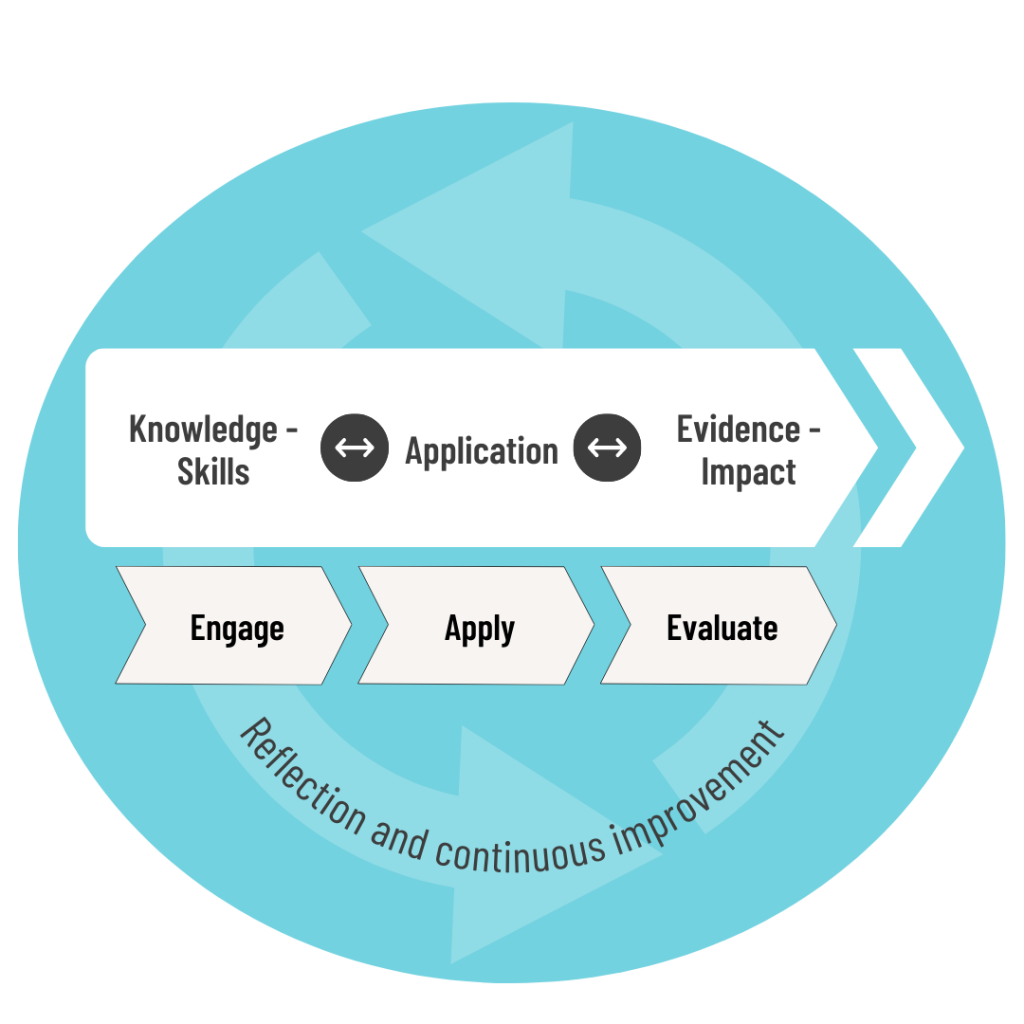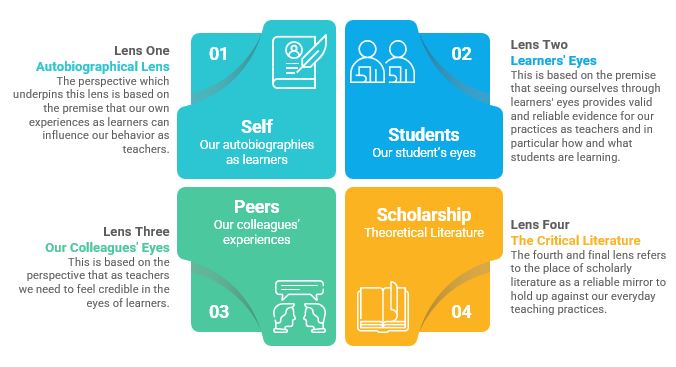The Taxonomy for Credentialing Australasian University Educators (TCAUE)
12 Dimensions of Learning
Dimensions of Learning are represented as Engage-Apply-Evaluate in this inquiry- and active-learning-based model for practice, reflection, and continuous improvement. The model is learner-centred, overlaps with the AQF Domains and Descriptors, and in the central positioning of reflection and continuous improvement brings to the forefront a focus on learner data, evidence-base, and impact. As educators in practice, users can replicate the model to build inquiry, exploration, and assessment into their learning and teaching, as illustrated in Figure 3.

Research and scholarship (disciplinary or pedagogical) are used to enhance participants’ learning.
The Dimensions of Learning – a practice-based and constructivist model – are outlined as follows:
- Engage – learners build knowledge and skills, actively connect with concepts and emerging or earlier practices, collate information, explore, participate in early implementation, and reflect through multiple lenses.
- Apply – learners synthesise and integrate concepts and ideas, apply strategies and evidence to practice, and reflect through multiple lenses.
- Evaluate – learners critique knowledge, skills and practices, monitor quality, reflect through multiple lenses, undertake decision-making and problem-solving, integrate continued improvement, and disseminate innovative approaches across higher education learning and teaching contexts/communities to influence the practices of others.
The arrows demonstrate the interconnectedness of dimensions of learning, and the personalised nature of educators as learners. An educator’s motivations may be driven from application of a strategy which calls for building new knowledges and skills, or critiquing data and/or practices that encourage revised applications.
Reflective practice
The Engage-Apply-Evaluate model is underpinned by reflective practice, and based on Brookfield’s (2017) four lenses approach, which includes critical self-reflection, plus reflection through the eyes of students (learners), colleagues/peers, and scholarly literature (see Figure 5). The use of multiple lenses brings insight and deeper analysis to attend to continuous improvement. Such improvement is action-based in making change to future practices (or contexts for practice).
Practitioners using the TCAUE apply four modes of reflection:
- Reflection-in-action: taking note of thinking and actions as they are occurring and making immediate adjustments as events unfold. Re-evaluation occurs ‘on the spot’.
- Reflection-on-action: looking back on and learning from experience or action in order to affect future action.
- Reflection-for-action: analysing practices with the purpose of taking action to change. It includes reflection-in-action and reflection-on-action. This type of reflection is proactive in nature.
- Reflection-within: similar to self-reflection, it involves inquiring about personal purposes, intentions and feelings (adapted from Education NSW, 2021).
Various lenses are used to reflect within each of these modes, as illustrated in Figure 4.

Aspects of the four lenses model and continuous improvement activities support professional development for all staff, promotion application requirements and fellowship applications.

